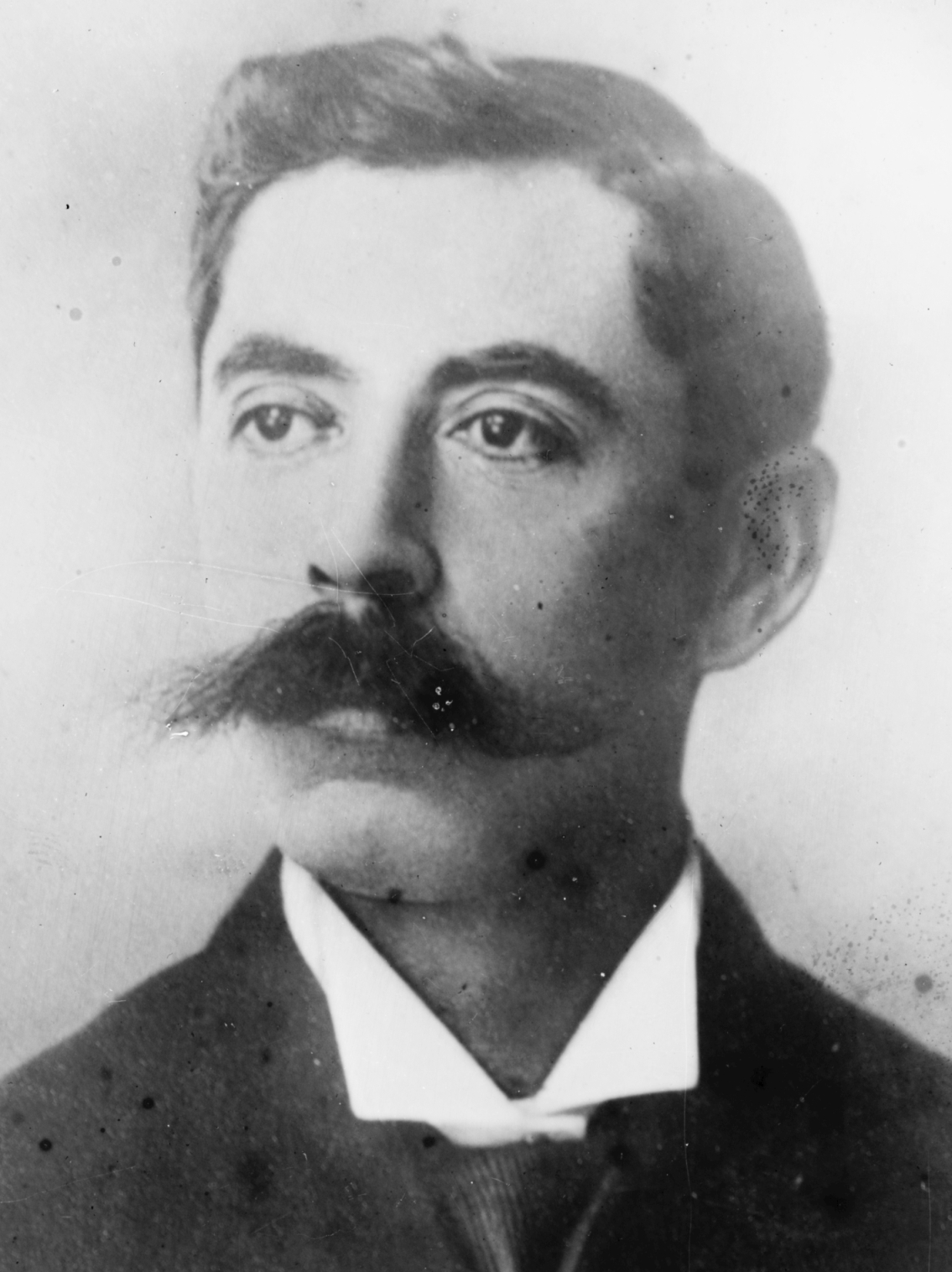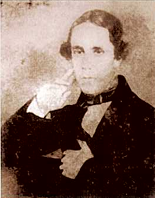|
Meléndez–Quiñónez Dynasty
The Meléndez–Quiñónez dynasty () was a period in El Salvador's history from 1913 to 1927 when the Salvadoran government was controlled by the Meléndez–Quiñónez political family. During this period, three of the family's members—brothers Carlos Meléndez (politician), Carlos Meléndez and Jorge Meléndez and their brother-in-law Alfonso Quiñónez Molina—rotated control of the President of El Salvador, presidency between themselves. The dynasty began in 1913 when Carlos became president after Manuel Enrique Araujo's assassination. Carlos resigned in 1914 to run in the 1915 Salvadoran presidential election, 1915 presidential election and was briefly succeeded by Quiñónez. Carlos won the election and served until his resignation in 1918. Quiñónez again succeeded him, and Carlos' younger brother Jorge won the 1919 Salvadoran presidential election, 1919 election. He served until 1923 when he was succeeded by Quiñónez. Quiñónez served until 1927 when he was suc ... [...More Info...] [...Related Items...] OR: [Wikipedia] [Google] [Baidu] |
Carlos Meléndez (politician)
Carlos Meléndez Ramírez (1 February 1861 – 8 October 1919) was a Salvadoran politician who served as the president of El Salvador from 1913 to 1914 and again from 1915 to 1918. He also served as the president of the Legislative Assembly from 1912 to 1913. Meléndez's presidency was a part of the broader Meléndez–Quiñónez dynasty that ruled El Salvador from 1913 to 1927. Early and personal life Carlos Meléndez Ramírez was born on 1 February 1861 in San Salvador, El Salvador. His parents were Rafael Meléndez and Mercedes Ramírez de Meléndez. His maternal grandfather was Norberto Ramírez, the president of El Salvador from 1840 to 1841. His siblings were Rafael, Francisco, Guillermo, Jorge (who later served as president from 1919 to 1923), Leonor, Carmen, and Sor. His sister Carmen married Alfonso Quiñónez Molina, a physician. Meléndez married Sara Meza de Meléndez but did not have children. Political career From 1904 to 1905, 1907 to 1910, and 1912 to ... [...More Info...] [...Related Items...] OR: [Wikipedia] [Google] [Baidu] |
Christmas Day Massacre (El Salvador)
The Christmas Day Massacre occurred on 25 December 1922 in San Salvador, El Salvador when members of El Salvador's security forces and the paramilitary Red League shot at a crowd of people supporting the presidential campaign of Miguel Tomás Molina. Background Ahead of the 1923 Salvadoran presidential election, the National Democratic Party (PND) chose Vice President Alfonso Quiñónez Molina as its presidential candidate to extend the rule of the governing Meléndez–Quiñónez dynasty. Miguel Tomás Molina, a former government minister and Quiñónez's cousin, declared that he would challenge Quiñónez to the presidency as a member of the Constitutional Party. President Jorge Meléndez declared a state of emergency that banned political rallies, and Molina accused the government of repression. Massacre On the afternoon of 25 December 1922, Molina held a political rally in downtown San Salvador. The rally included a large contingent of women belonging to the Const ... [...More Info...] [...Related Items...] OR: [Wikipedia] [Google] [Baidu] |
1907 Salvadoran Presidential Election
Presidential elections were held in El Salvador on 13 January 1907. General Fernando Figueroa was elected with 99.76 percent of the vote. His closest rival Luis Alonso Barahona received 222 votes to Figueroa's 152,053. Campaign Prior to the 1907 presidential election, President General Pedro José Escalón and his allies hand-picked Vice President General Fernando Figueroa to be his successor as president of El Salvador. This followed a precedent set by Escalón's predecessor, Tomás Regalado, who selected him as his successor ahead of the 1903 presidential election. Some politicians opposed Figueroa's selected. Among them were General Luis Alonso Barahona who decided to run against Figueroa. Before the election, Figueroa had Barahona arrested and Barahona's supporters were persecuted. Results All men were eligible to vote in the election. President Results by department The following table displays the number of votes each presidential candidate received fro ... [...More Info...] [...Related Items...] OR: [Wikipedia] [Google] [Baidu] |
1903 Salvadoran Presidential Election
Presidential elections were held in El Salvador on 16 February 1903. General Pedro José Escalón was elected with 78 percent of the vote. President Tomás Regalado hand-picked Escalón to be his successor. All men were eligible to vote in the election. Results President Results by department The following table displays the number of votes each presidential candidate received from each of the country's 14 departments. The candidate with the most votes in a department is highlighted in . Vice president Results by department The following table displays the number of votes each presidential candidate received from each of the country's 14 departments. The candidate with the most votes in a department is highlighted in . Notes References Citations Bibliography * * * Further reading * {{Authority control El Salvador President President most commonly refers to: *President (corporate title) * President (education), a leader ... [...More Info...] [...Related Items...] OR: [Wikipedia] [Google] [Baidu] |
Prudencio Alfaro
Prudencio Alfaro Menéndez (1861 – 23 December 1915) was a Salvadoran politician who served as Vice President of El Salvador from 1895 until 1898. He later led a joint Honduran-Nicaraguan invasion of El Salvador in 1907. Early life Prudencio Alfaro Menéndez was born in 1861 in Jutiapa, Guatemala.Zepeda Peña 2006, p. 141 His father was Manuel Alfaro and his mother was Andrea Menéndez. He attended the University of El Salvador where he completed his bachelor's degree and doctorate in the Faculty of Political and Social Sciences. Political career In 1885, he participated in a revolution which overthrew Salvadoran President Rafael Zaldívar, and after which, he was elected as a deputy to the Legislative Assembly of El Salvador from Ahuachapán. He opposed the government of President Carlos Ezeta, who deposed President Francisco Menéndez in 1890, and in 1894, he participated in the Revolution of the 44 which deposed Ezeta and installed Rafael Antonio Gutiérrez as ... [...More Info...] [...Related Items...] OR: [Wikipedia] [Google] [Baidu] |
1895 Salvadoran Presidential Election
Presidential elections were held in El Salvador in January 1895. General Rafael Antonio Gutiérrez, who was serving as the country's provisional president during the election, ran unopposed and was elected with over 99 percent of the vote. Concurrent vice presidential elections were held, during which, Prudencio Alfaro defeated Carlos Meléndez and four minor candidates. Campaign Presidential elections were scheduled to be held in January 1895 following the Revolution of the 44 which overthrew President Carlos Ezeta in June 1894. General Rafael Antonio Gutiérrez, who led the revolution and succeeded Ezeta as provisional president, ran for president unopposed. Meanwhile, the vice presidential election was contested by Prudencio Alfaro and Carlos Meléndez, both of whom were also leaders of the 1894 revolution. Gutiérrez did not endorse either candidate and allowed them to compete for the vice presidency. General Estanislau Pérez, General Tomás Regalado, and two other m ... [...More Info...] [...Related Items...] OR: [Wikipedia] [Google] [Baidu] |
Vice President Of El Salvador
The vice president of El Salvador () is a political position in El Salvador which is elected concurrently with the position of President of El Salvador. A list of the office holders follows. The list may not be complete. List of vice presidents See also * List of current vice presidents References {{Deputy heads of government of North America Government of El Salvador El Salvador El Salvador, officially the Republic of El Salvador, is a country in Central America. It is bordered on the northeast by Honduras, on the northwest by Guatemala, and on the south by the Pacific Ocean. El Salvador's capital and largest city is S ... ... [...More Info...] [...Related Items...] OR: [Wikipedia] [Google] [Baidu] |
Rafael Antonio Gutiérrez
Rafael Antonio Gutiérrez (24 October 1845 – 9 January 1921) was the president of El Salvador from 10 June 1894 to 13 November 1898. He was a leader of the Revolution of the 44 which overthrew President General Carlos Ezeta from April to June 1894. Gutiérrez served as provisional president until being officially inaugurated in March 1895 after his victory in the 1895 presidential election, in which he was the only candidate. During his four-year presidency, Gutiérrez settled land disputes, attempted to combat an economic crisis, and was a key figure in the foundation of the short-lived Greater Republic of Central America. He was overthrown on 13 November 1898 by General Tomás Regalado. Gutiérrez's overthrow subsequently lead to a revolt in Izalco the following day and the dissolution of the Greater Republic of Central America on 29 November 1898. Early and personal life Rafael Antonio Gutiérrez was born in Ilobasco, Cabañas, El Salvador on 24 October 1845. His ... [...More Info...] [...Related Items...] OR: [Wikipedia] [Google] [Baidu] |
Revolution Of The 44
In political science, a revolution (, 'a turn around') is a rapid, fundamental transformation of a society's class, state, ethnic or religious structures. According to sociologist Jack Goldstone, all revolutions contain "a common set of elements at their core: (a) efforts to change the political regime that draw on a competing vision (or visions) of a just order, (b) a notable degree of informal or formal mass mobilization, and (c) efforts to force change through noninstitutionalized actions such as mass demonstrations, protests, strikes, or violence." Revolutions have occurred throughout human history and varied in their methods, durations and outcomes. Some revolutions started with peasant uprisings or guerrilla warfare on the periphery of a country; others started with urban insurrection aimed at seizing the country's capital city. Revolutions can be inspired by the rising popularity of certain political ideologies, moral principles, or models of governance such as nation ... [...More Info...] [...Related Items...] OR: [Wikipedia] [Google] [Baidu] |
Executed By Firing Squad
Execution by firing squad, in the past sometimes called fusillading (from the French , rifle), is a method of capital punishment, particularly common in the military and in times of war. Some reasons for its use are that firearms are usually readily available and a gunshot to a vital organ, such as the brain or heart, most often will kill relatively quickly. Procedure A firing squad is normally composed of at least several shooters, all of whom are usually instructed to fire simultaneously, thus preventing both disruption of the process by one member and identification of who fired the lethal shot. To avoid disfigurement due to multiple shots to the head, the shooters are typically instructed to aim at the heart, sometimes aided by a paper or cloth target. The prisoner is typically blindfolded or hooded as well as restrained. Executions can be carried out with the condemned either standing or sitting. There is a tradition in some jurisdictions that such executions are car ... [...More Info...] [...Related Items...] OR: [Wikipedia] [Google] [Baidu] |
List Of Presidents Of The Legislative Assembly Of El Salvador
The president of the Legislative Assembly of El Salvador is the speaker (politics), presiding officer of the Legislative Assembly of El Salvador. List of presidents of the Legislative Assembly References Bibliography Historia del Órgano Legislativo de la República de El Salvador 1824–2006: 1824–1870 [...More Info...] [...Related Items...] OR: [Wikipedia] [Google] [Baidu] |




